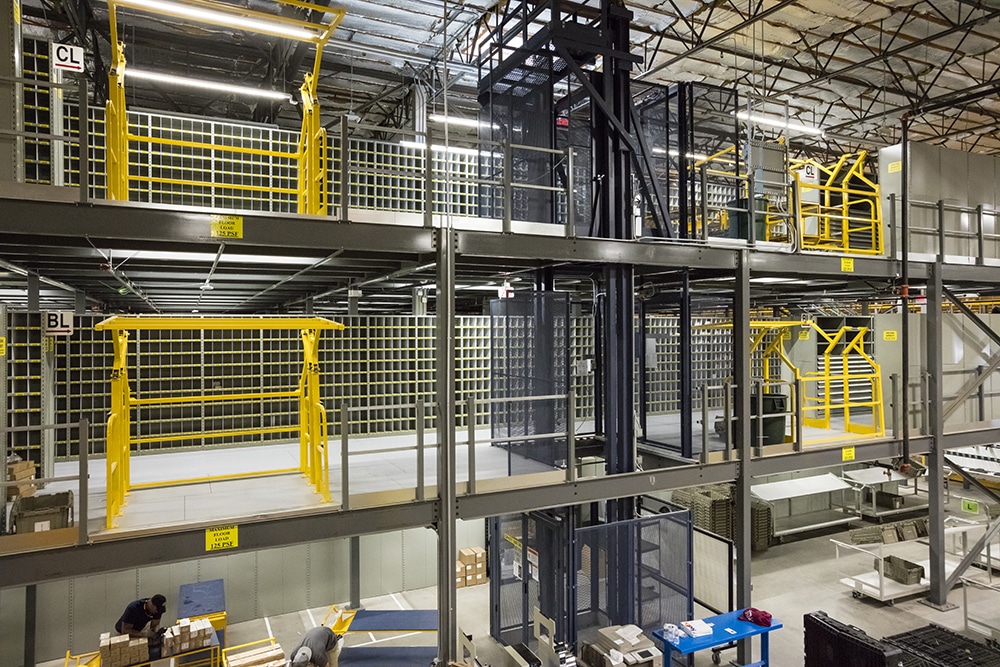April 2024 Insights: Staffing America’s Manufacturing Boom
Plus: vertical warehouse automation factors, AI in industrial operations

This month, we cover the investments one state is making to staff its manufacturing sector, vertical automation options, AI in warehousing, and more.
America is Building Factories Again. But Who Will Work in Them?
If you run a factory these days, you’re likely aware that hiring labor – much less skilled labor – is the hardest it’s ever been. This Bloomberg video goes into detail on Tennessee’s investments in technical education. $16 billion in new industrial space investment has taken place in the state, prompting Tennessee to emulate the German model of vocational education for both high school and adult students.
Pflow: The Challenges of Automating Multilevel Warehouses

As labor availability continues to challenge manufacturing and warehousing, automation continues to increase throughout these sectors. This has the effect of also affecting the space of these industrial facilities, making optimized, higher density storage and operations more important than ever. Pflow, which manufactures vertical conveyors, lays out some of the challenges for companies with vertical space integration plans.
Key takeaways
- Your floors are congested with foot, forklift and automated vehicle pathways alongside storage and processing areas.
- Product diversity: if you need to move products horizontally, you’ll likely need to move them vertically. How is that accomplished with a wide variety of SKU counts?
- Your workflows are probably complex. If you must coordinate product flow in tighter, more vertical spaces, how will you do it?
- Customization is another question. If you’re relying on a customized solution, with its incumbent processes and integrations, how well can it adapt to changes?
- Safety is always an issue. If you’re moving products vertically, new dangers are possible.
Corporate Ozempic
NYU Professor Scott Galloway compares the widespread implementation of Artificial Intelligence in business to that of GLP-1 drugs like Ozempic in a recent post.
“Nobody I know is on Ozempic,” he says. “Yet, nearly everyone I know is,” as so many are losing weight rapidly. Similarly, Galloway says that companies, especially tech companies with the infrastructure to implement AI, are harvesting huge productivity gains without admitting AI is the reason.

Companies like Accenture, BlackRock, Google, PayPal and more are simultaneously reducing headcount while their net income grows. Galloway says that technology companies laid off a combined 425,000 people since 2022, with another 270,000 layoffs possible in 2024. Business results and pandemic-era hiring explain some of that, but the continuing layoffs in the face of ever-improved business results point to another cause: AI.
- Galloway believes CEOs are loathe to admit AI is driving these financial gains and layoffs.
- While job losses are the headline story, augmentation of existing work is the real story in Galloway’s mind.
- This will let managers start new initiatives without the growing pains of hiring and development.
How does manufacturing stack up?
Manufacturing and warehousing aren’t in the prime industries where AI can automate work–at least, not today.
Industries like administrative support, legal, or financial functions are the tasks where this seems more feasible right now. Upstream and downstream of your warehouse is where the immediate gains seem currently feasible, but there will no doubt be improvements to systems such WMS and picking software that help direct and track events in a warehouse.
How can you take advantage of AI in your warehousing or assembly operation? Likely, through software integrations that help guide the work and account for actions along the way. At some point, there may be reliable AI integrations with robotics and other automation that change the game.
Read more
- According to Industry Week, an upcoming Supreme Court ruling could impact “a massive number of companies.” The court will decide which companies, and in what ways, qualify as engaging in interstate commerce and how that affects employee dispute arbitration.
- In 3 warehouse real estate markets to watch in 2024, Supply Chain Dive covers the rate of construction in “hot spots” for warehousing. The top markets analyzed are Savannah, Georgia, Southern California and El Paso, Texas, which has demand “far above” historical averages.
- Arkansas State University reports that Congress has approved funding of $10 million to support a center for advanced materials and steel manufacturing. The university will partner with steel manufacturers for research and process improvements in the state’s steel industry.
Tags: labor, Automation, Manufacturing
Scott Stone is Cisco-Eagle's Vice President of Marketing with 35 years of experience in material handling, warehousing and industrial operations. His work is published in multiple industry journals an websites on a variety of warehousing topics. He writes about automation, warehousing, safety, manufacturing and other areas of concern for industrial operations and those who operate them.



